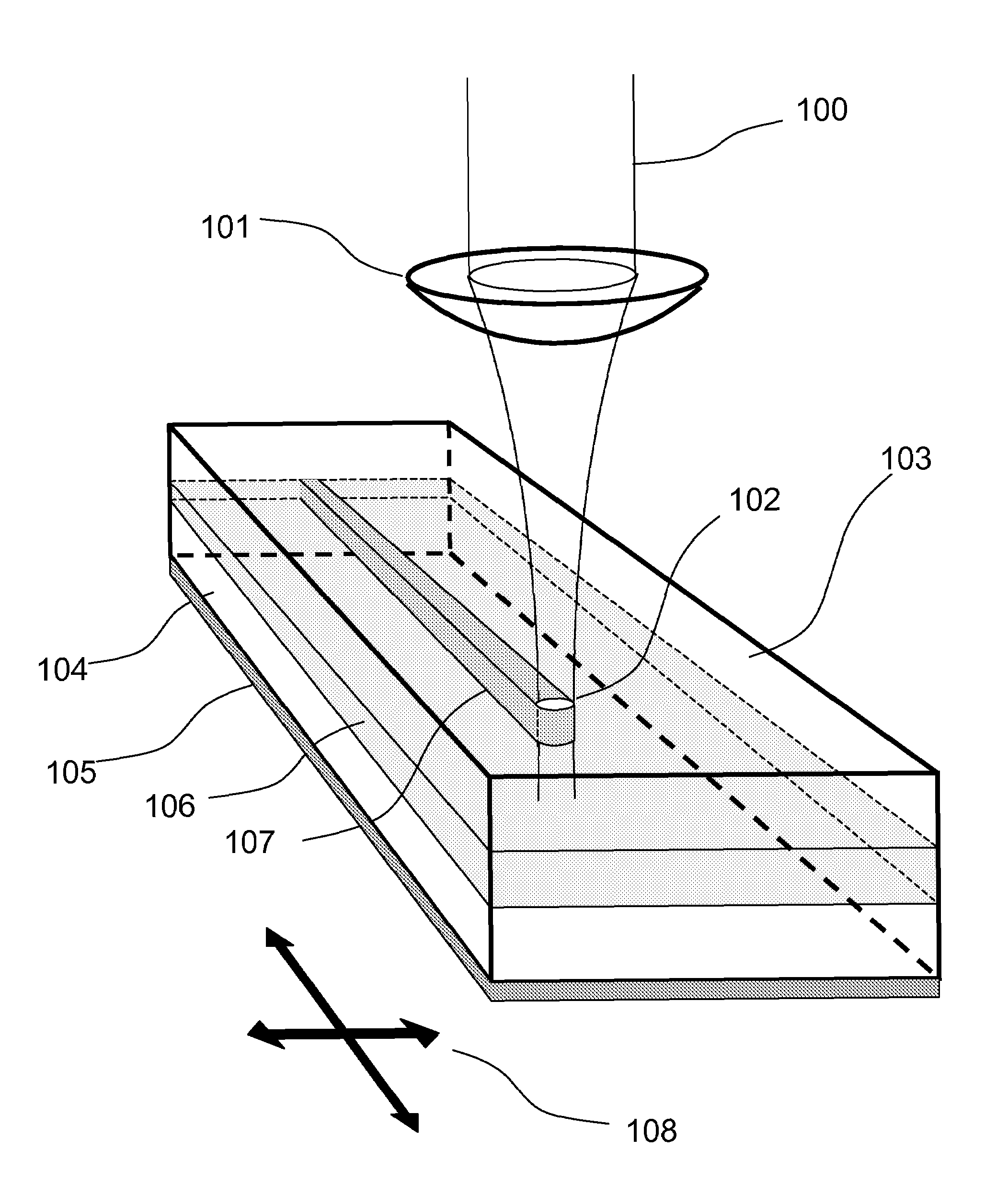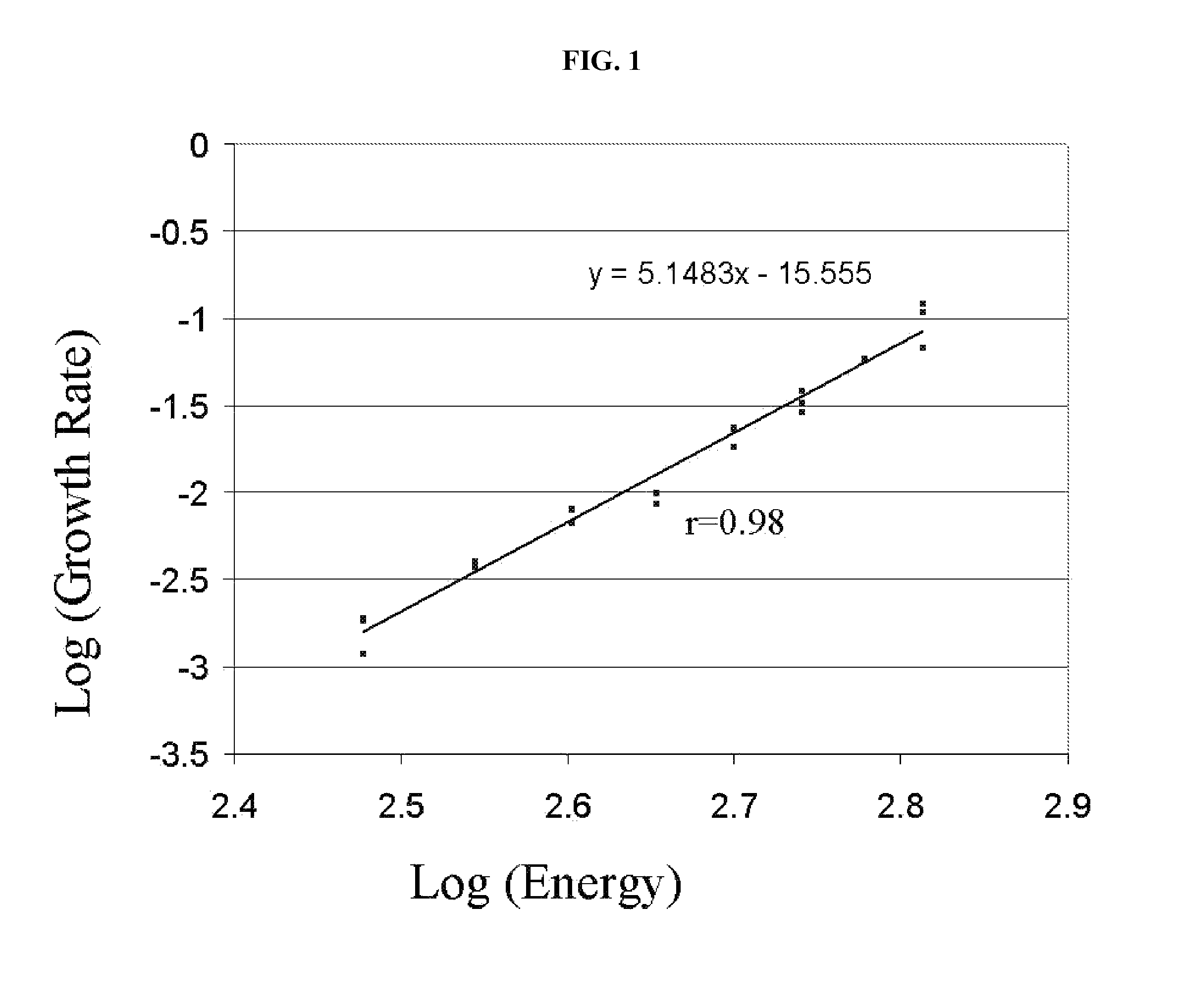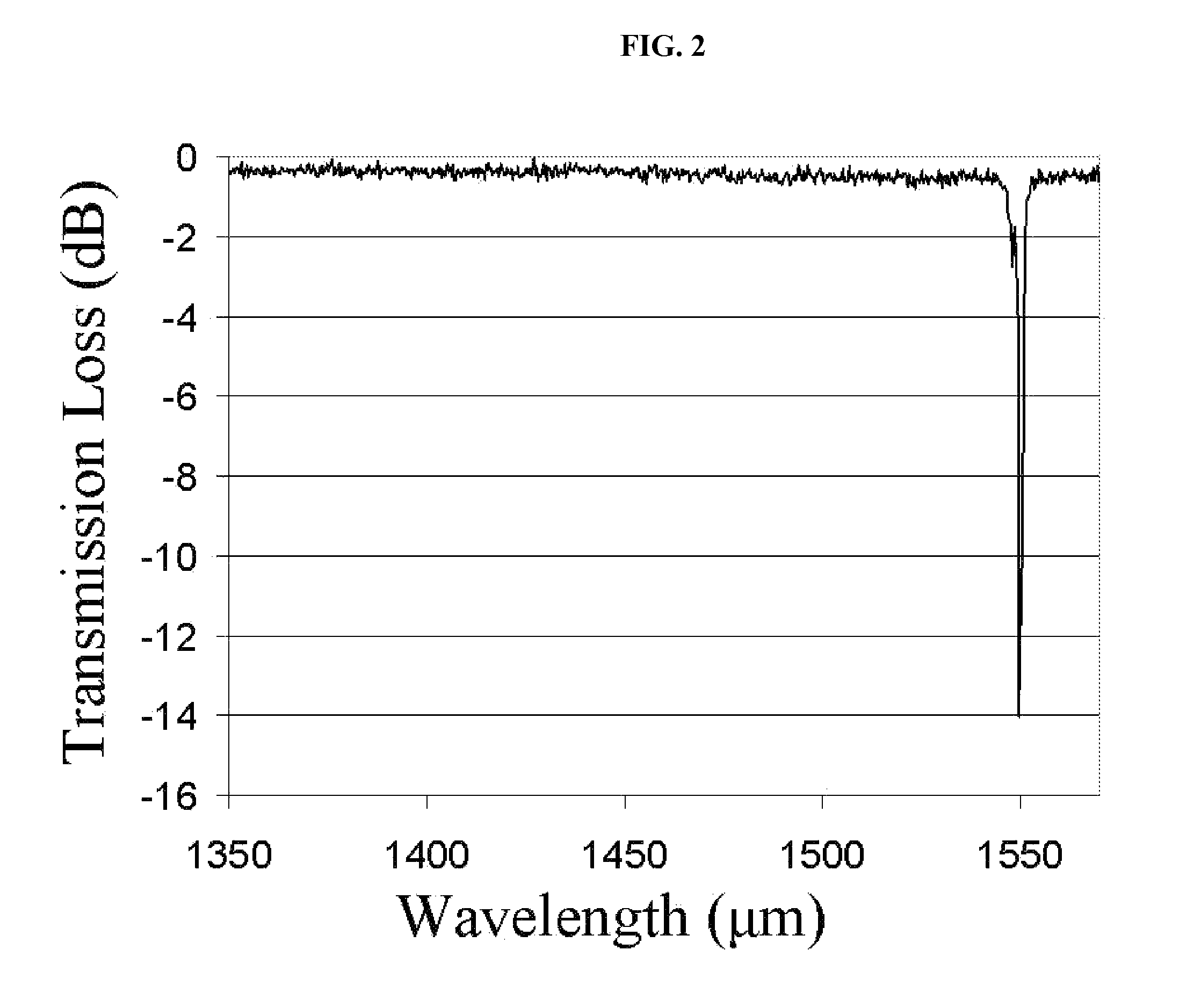Method of increasing photosensitivity of glasses to ultrafast infrared laser radiation using hydrogen or deuterium
a laser radiation and ultrafast technology, applied in the field of inducing a refractive index change in optical media, can solve the problems of localized melting and restructuring of materials, concurrent increase in the index of refraction, and the potential problem of overexposure of bulk glass in the femtosecond laser based direct write process
- Summary
- Abstract
- Description
- Claims
- Application Information
AI Technical Summary
Benefits of technology
Problems solved by technology
Method used
Image
Examples
Embodiment Construction
[0036]Slab waveguide structures made with Ge-doped silica on silicon are a popular medium for direct-write inscription of photonic circuits. By exposing such a waveguide to high pressure hydrogen or deuterium, the Ge-doped silica slab portion of the waveguide is more photosensitive to high intensity IR light, by reducing the threshold for multi-photon absorption induced refractive index change.
[0037]For 3% Ge-doping by weight of pure silica, the threshold intensity for induced index change is reduced by a factor of 3 when the substrate is loaded with 2600 psi molecular hydrogen or deuterium gas for 14 days at room temperature. It is likely that the threshold would be more substantially reduced for higher concentrations of Ge-dopant. The measurement of the variation of induced index change in hydrogen-loaded Ge-doped silica as a function of incident femtosecond IR beam intensity can easily be measured by inscribing a grating structure in a Ge-doped core region of an optical fiber or ...
PUM
 Login to View More
Login to View More Abstract
Description
Claims
Application Information
 Login to View More
Login to View More - R&D
- Intellectual Property
- Life Sciences
- Materials
- Tech Scout
- Unparalleled Data Quality
- Higher Quality Content
- 60% Fewer Hallucinations
Browse by: Latest US Patents, China's latest patents, Technical Efficacy Thesaurus, Application Domain, Technology Topic, Popular Technical Reports.
© 2025 PatSnap. All rights reserved.Legal|Privacy policy|Modern Slavery Act Transparency Statement|Sitemap|About US| Contact US: help@patsnap.com



